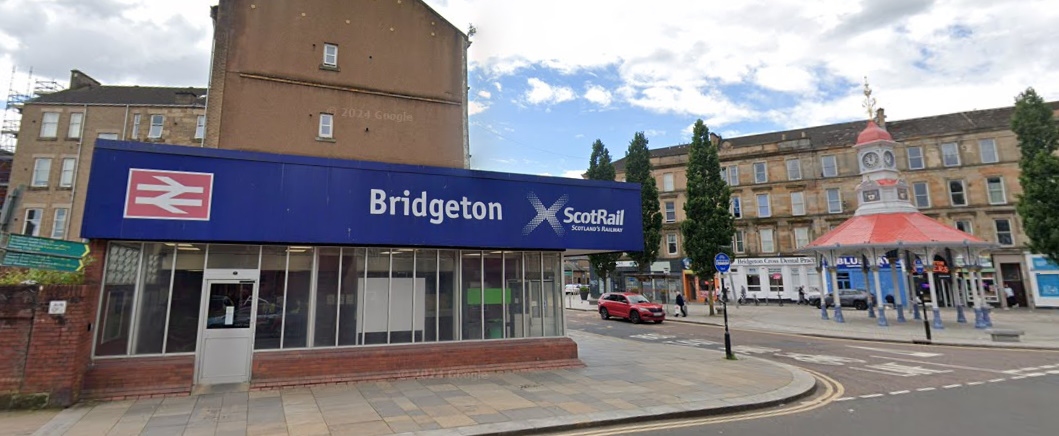Bridgeton Cross
Bridgeton Cross
The station at Bridgeton Cross (known locally as Brigton) was first opened in 1892. A victim of the 'Doctor' Beeching rail cuts, it closed down on 5 October 1964.
As part of the Argyle Line project, the station reopened on 5 November 1979 as 'Bridgeton', to provide commuter services into Glasgow Central Station and on towards the western suburbs.
Before rail transport, the road through the area was the main trading route to Dalmarnock and its ford. A toll point was established (hence the area's other name: 'The Toll') and until 1870 the place was known as Barrowfield Toll. As the city developed, the area was renamed Bridgeton Cross.
The Origin And History Of Glasgow Streets, by Hugh Macintosh (1902), indicates that Bridgeton Cross proper is at the junction of Reid Street and Dale Street, and the spot was for many years marked with by cross arrangement of stones sunk in the causeway. The area now known as Bridgeton Cross has its own cross; consisting of the road junction of London Road, Dalmarnock Road, Main Street and James Street.

(Drawing by Peter Schneider)
In 1875, a shelter was built at the junction for homeless people. Affectionately known as the Bridgeton Cross Umbrella, the shelter and clock surmounting it were made in Port Dundas by George Smith & Co at their Sun Foundry. They also provided a cherub-topped drinking fountain which stood to the east of the shelter.
The shelter proved popular, not only for the displaced, but also as a meeting point for people going to the Olympia cinema across the road, until that closed in 1974.
The shelter is also known locally as Brigton Bandstand; the more noticeable bands being those of the marching 'Boys'. For a long time the area has been a loyalist and Protestant stronghold, facing the adjacent Gorbals, traditionally a Roman Catholic area.
Billy Boys, Derry Boys, Glasgow Rangers and Celtic football clubs, the inevitable bloody riots and occasional heinous crime of murder. The cross was a favourite spot for public speakers, but the most regular visitors have been the drunks and other addicts.
So in 1995, the seats were removed in an attempt to discourage people loitering, though there are still cold concrete slabs dotted around the area. The cross was refurbished and prepared for holding regular markets around the Umbrella as part of the area's plan for regeneration. It may one day take on yet another title as a Market Cross.
